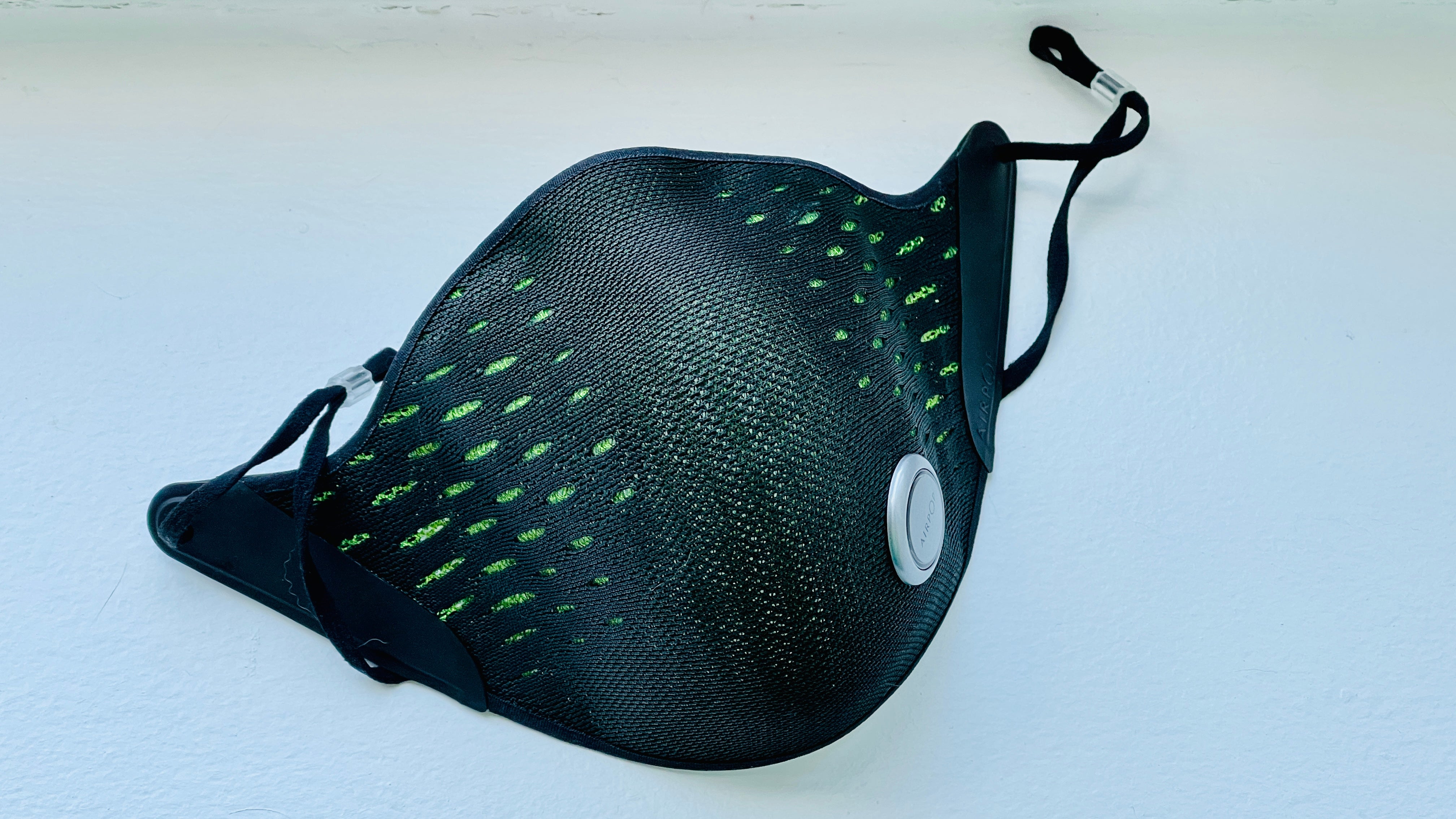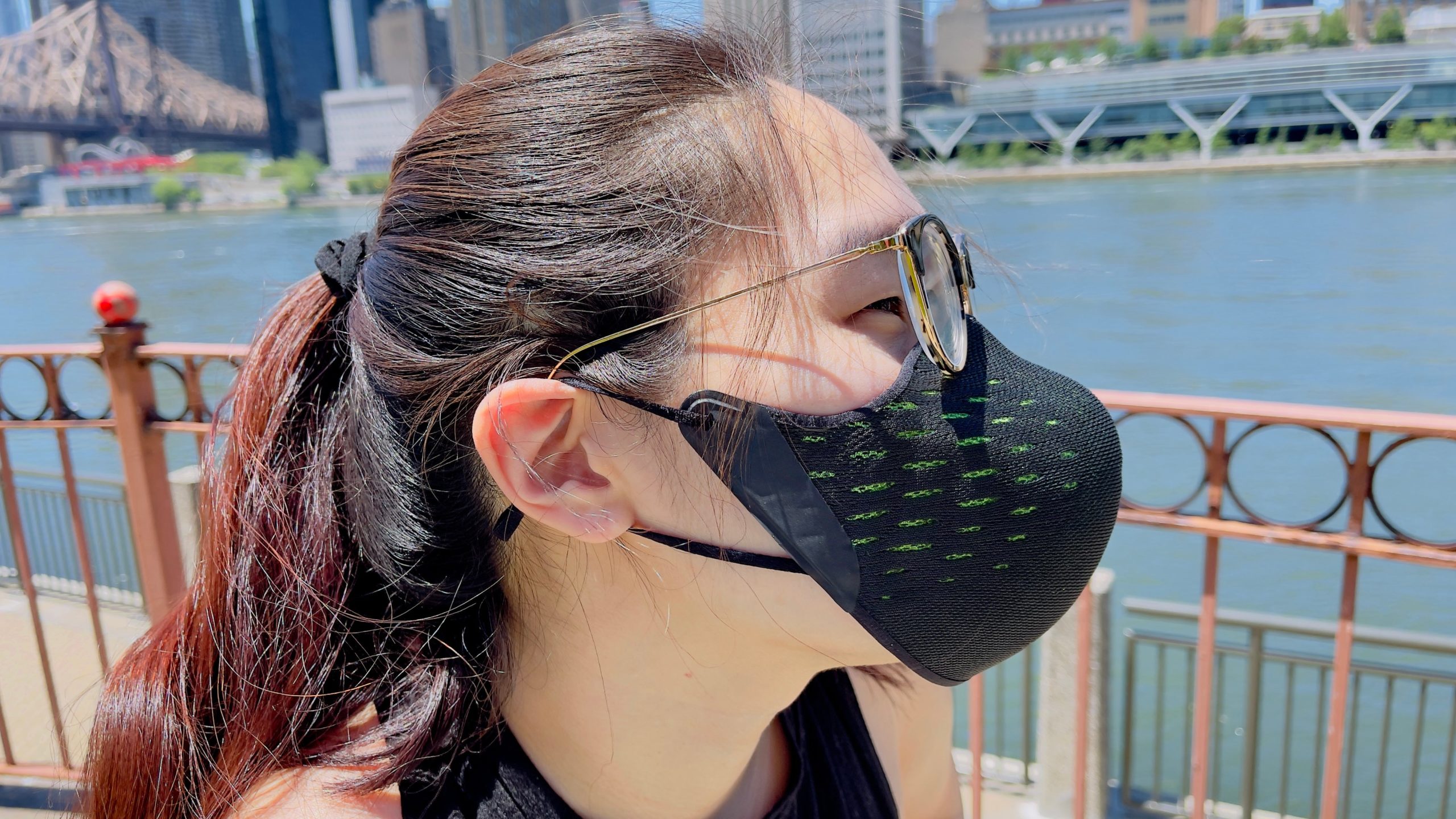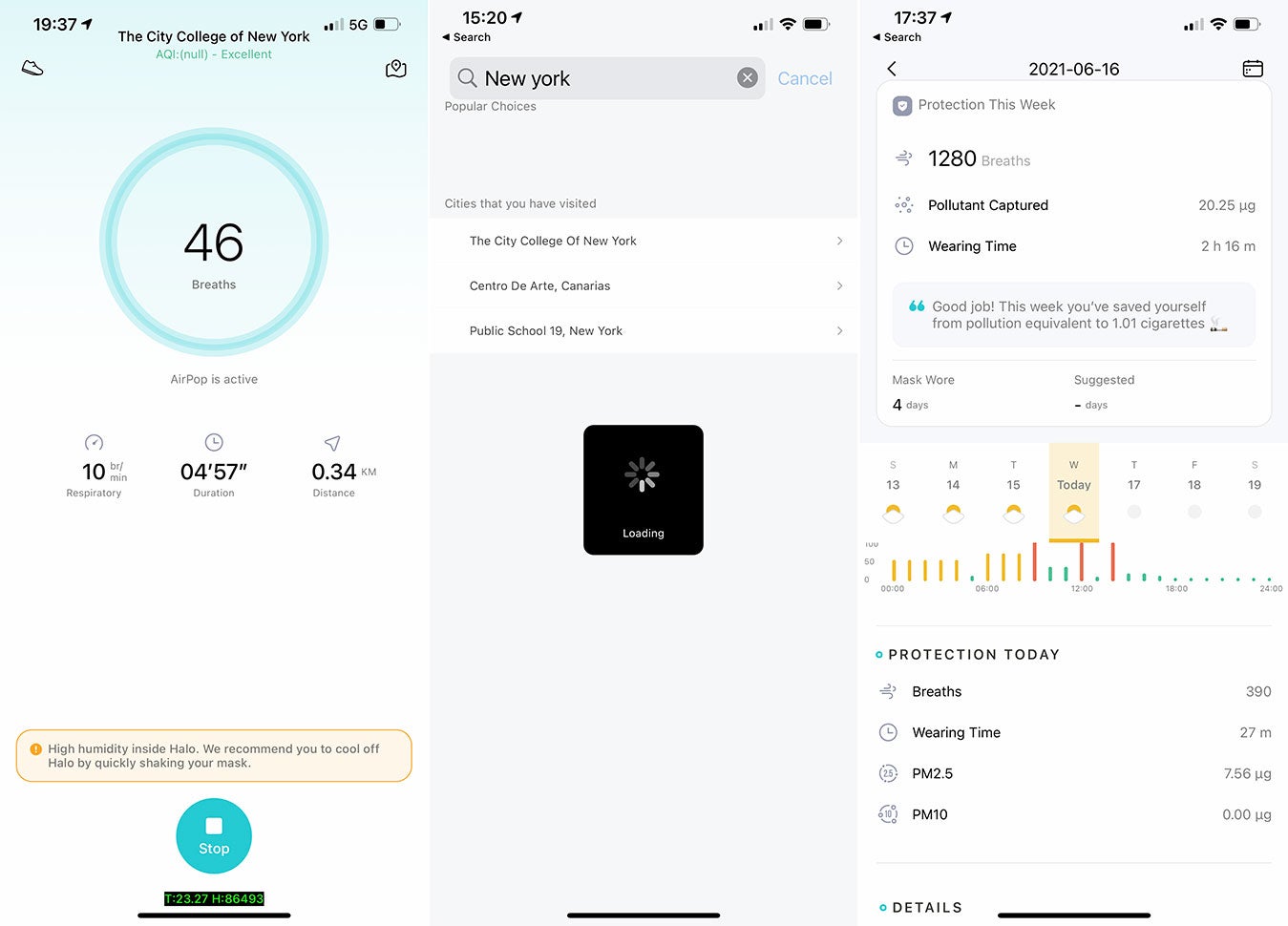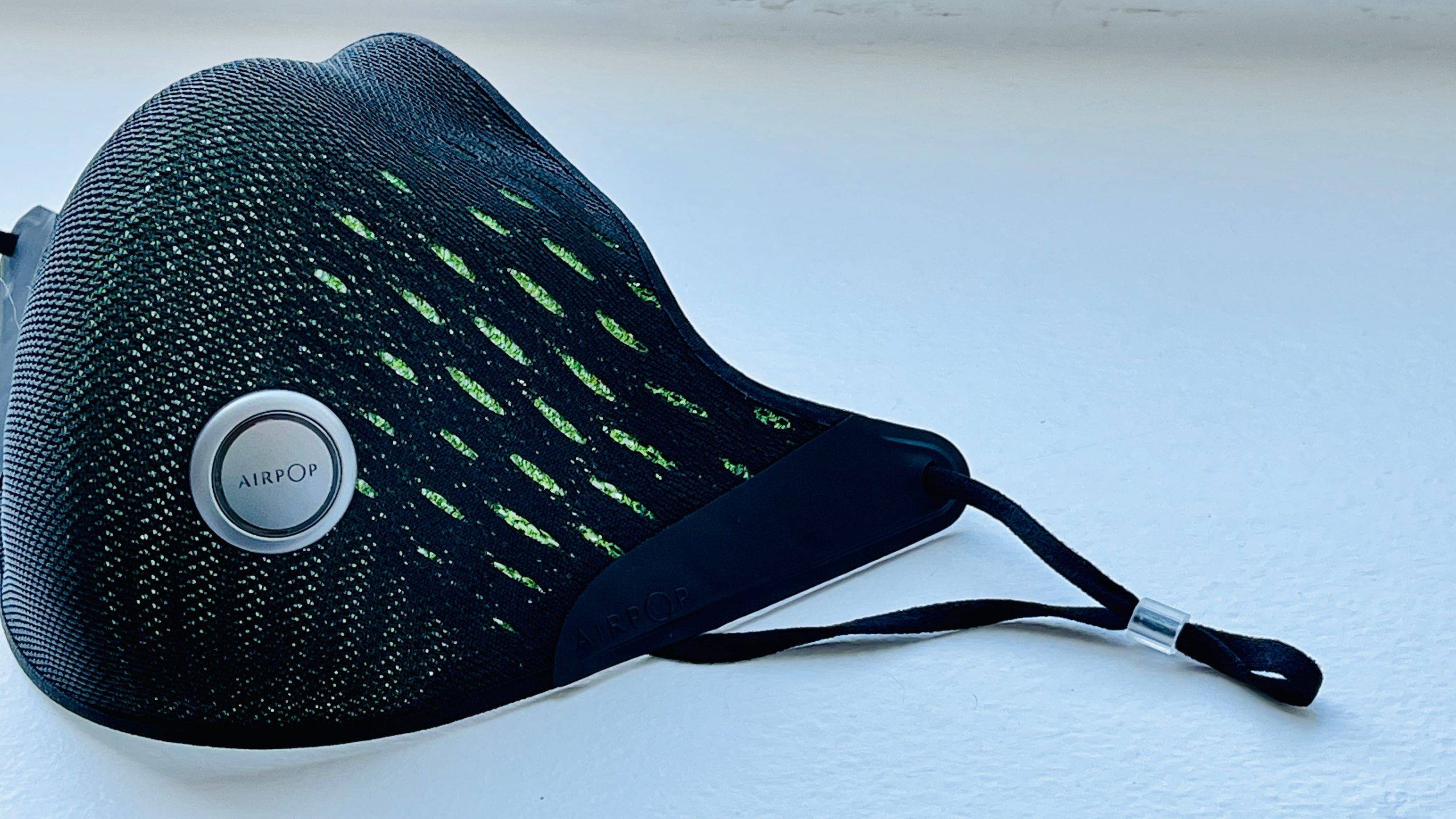In the last 16 months, masks have become a part of our daily lives. So, of course, companies have tried to “innovate” on them by adding smart features. Razer’s Project Hazel, for instance, looks like a prop straight out of Cyberpunk 2077 with its RGB lights, replaceable N95 masks, and voice amplification features. Will.i.am’s also making a stupid face mask and has the gall to charge $380. There’s also the MaskFone, which as the name implies, features built-in Bluetooth so you can take calls.
Then there’s the AirPop Active+ Halo Smart Mask, which out of all of these weirdly executed options seemed like the one that might actually be a useful blend of smarts and design. I admit I was a little sceptical when it made the rounds at CES 2021. Designed for activity, the mask is supposedly effective at filtering particulates while also being highly breathable. It also has a sensor that can measure air quality. After a few weeks of wearing one, however, I’m not convinced anyone needs a smart mask — let alone one that costs an arm and a leg for something everyone should have for free.

AirPop Active+ Halo Smart Mask
What is it?
A smart mask that can help you monitor air quality
Price
$US150 ($192)
Like
Comfortable to wear. Pretty breathable for everyday tasks. Replaceable filters.
No Like
Holy mama it's expensive. App is buggy as hell. Not that great for vigorous exercise. Metrics aren't consistently reliable.
A Breathable Design That Falls Short for Exercise
The AirPop website uses a lot of fancy words to describe the Active+ Halo’s design. Its shape is supposedly “engineered for ideal airflow” and creates a “canopy of clean air.” What you really need to know is that it has a flexible, moisture-wicking outer shell that’s resistant to humidity, abrasions, and water. On the inside, there are two pegs on each side where you can place one of AirPop’s proprietary filters. And on the front left, you can see the circular Halo sensor. (Yes, it lights up.)
The filter itself has a neat design. Around the edge, there’s a seal made from a medical-grade membrane. There’s even a flap that you fold up at the nose for a more secure and comfortable fit. I appreciated the adjustable ear loops, and while I did sometimes end up with foggy eyeglasses, it wasn’t as bad as with some other masks I’ve tried. And for all the marketing jargon, I ended up liking the “canopy” between my mouth and the filter — if only because it meant I could wear lipstick or gloss without it smearing all over my face.

But was it breathable? Yes, but only for a short walk at a moderate pace or a jaunt to a store. It wasn’t all that useful for more rigorous exercise. I tried using it for two runs and each time I lasted only about 10 minutes before I ripped this thing off my face. Likewise, on a walk, my husband asked if I was doing my best Darth Vader impression based on how heavily I was breathing. He then reminded me I was torturing myself for no reason, as I’m fully vaccinated and can walk outdoors mask-free. On another brisk walk, I got a notification that the inside of the mask had reached peak humidity, and was recommended to “cool off Halo by quickly shaking [my] mask.”
You might have a different experience if you’re not fazed by running with a mask. That said, I lasted a whole five minutes longer with the Active+ Halo than with the UA Sportsmask. It was more comfortable too. So while I didn’t find it up to snuff for workouts, it’s pretty good for running errands. The problem is this is a $US150 ($192) smart mask. It’s got to be better than “pretty good” to be worth it.
Air Quality Monitoring Doesn’t Make Up for Glitchy App
Companion apps can make or break a gadget. For the Active+ Halo, it’s the latter.
Setting the mask up isn’t hard. You set up an account, pair the device, and pick which colour you want the Halo to light up. After that, you scan the QR code that comes with your filter. Each one is rated for 40 hours of use, so scanning lets you keep track of how many hours are left. Forty hours is decent if you’re wearing a mask on and off throughout the day. It’s not as impressive if you’re someone who has to wear one for several hours at a time.
The app’s UX is clunky. There are two tabs — one for your stats and another for activity tracking. On the stats page, you’re supposed to see the air quality index of your area, as well as metrics like how many breaths you took, how many pollutants were filtered, and how long you’ve worn the mask. If you swipe down, you can access the “Mask Status” menu, which shows you how many hours your filter has left and a button to sync data. Whenever I hit the button, however, the app screen went blank and I’d have to navigate to a different menu. It’s a weird quirk that doesn’t impact syncs, but it doesn’t make for a friendly user experience.

As for air quality, the app pulled my Air Quality Index from an area in New York City that’s about 16 km away. That’s not a big deal, but nevertheless, I tried to see if it was possible to switch it to a closer area. In my attempt, I somehow broke the feature. For nearly two weeks, that screen was either stuck on the buffering symbol or froze. Restarting the app didn’t help, and typing cities or zip codes into the search bar returned zero results. On a hunch, I recorded another live GPS walk and that seemed to fix the problem. I even got missing metrics for the days it was borked. These “minor” bugs aren’t always dealbreakers, but generally, it’s a sign you’re dealing with a shoddy app.
Unfortunately, the mask doesn’t always accurately count my breaths. I recorded two walks with the app and it said my breathing rate was 10 breaths per minute. I know from tracking my sleep with the Oura Ring, Whoop, and other devices that my respiratory rate is somewhere between 16-19 breaths per minute at rest. On a third walk, it recorded a much more reasonable 20-22 breaths per minute. I also checked by manually counting my breaths between syncs. Sometimes the count was pretty spot on, other times it was way off. All this told me was that it’d be hard to trust that the reported metrics were consistently reliable.
At the very least, I thought it’d be handy at tracking my filter’s lifespan. Nope, the results here were mixed, too. For two weeks, the app said I had 39 hours left on my filter. This was even though I’d logged more than three hours of activity elsewhere in the app, and had synced successfully multiple times. Randomly, it updated the count to a more accurate 36.5 hours but that’s still slightly off by my calculations.

To clarify, it’s not that I think this mask doesn’t work. AirPop says it has third-party validation testing and certifications for bacterial filtration, particle filtration, EU Community “barrier” mask guidelines, and skin-friendly standards. The results can be directly downloaded from the website, and there’s also an extensive FAQ section explaining what they mean. That’s actually decent for a wellness gadget. Most don’t even bother. (That said, I can’t actually test if I was breathing cleaner air while wearing this mask.)
Even if the Active+ Halo was the most accurate air quality-measuring mask on the planet, CDC-authorised N95 and K95 masks aren’t expensive. Some sell for less than a dollar each. The real reason you’d get the Active+ Halo mask over a cheaper, more widely available one, is to get a better understanding of your neighbourhood’s air quality. For a long time, I had no idea what that was thanks to a glitchy app and inconsistent metrics. That’s not a good look for a $US150 ($192) mask that’s already not that great for sports.
Do We Even Need Smart Masks Post-Pandemic?
Hot vax summer is here in the U.S., and with it raises the question of whether smart masks are relevant anymore — if they ever were. I live in New York, and the state announced on June 15 that most covid-19 restrictions have been lifted immediately because 70% of adults have received at least one shot. At the same time, I still see people in my neighbourhood masking up when grocery shopping or ducking into the local Starbucks. And even if the state is comfortable adopting the honour system for businesses, you’re still supposed to wear masks on public transit. Likewise, my apartment building has said masks are still required when interacting with building staff.

Some experts have floated the idea that masks might be a semi-permanent thing going forward. In Asia, masks are a common sight during flu season and culturally, it’s viewed as inconsiderate to forgo one if you know you’re coming down with something. When I lived in Tokyo, it was second nature to grab one to leave my apartment whenever I had the sniffles. Who knows? This could also be a permanent fixture going forward in American culture. And even when this pandemic is eventually declared over in the U.S., that may not be the case abroad for quite some time.
So yes, right now masks are here to stay — even if it’s just for the short or medium-term. Hell, air pollution is a serious health risk (and it makes covid-19 more dangerous, too). It’ll still be a serious problem once the pandemic is a distant memory. A mask that monitors air pollution is a worthwhile idea from an environmental perspective. But while I genuinely like the overall design and fit of the AirPop Active+ Halo Smart Mask, I can’t in good conscience recommend people pay out the nose for a buggy app and so-so metrics when all you really need is a weather app and a box of K95 masks. After all, no one should have to pay a premium for cleaner air.
